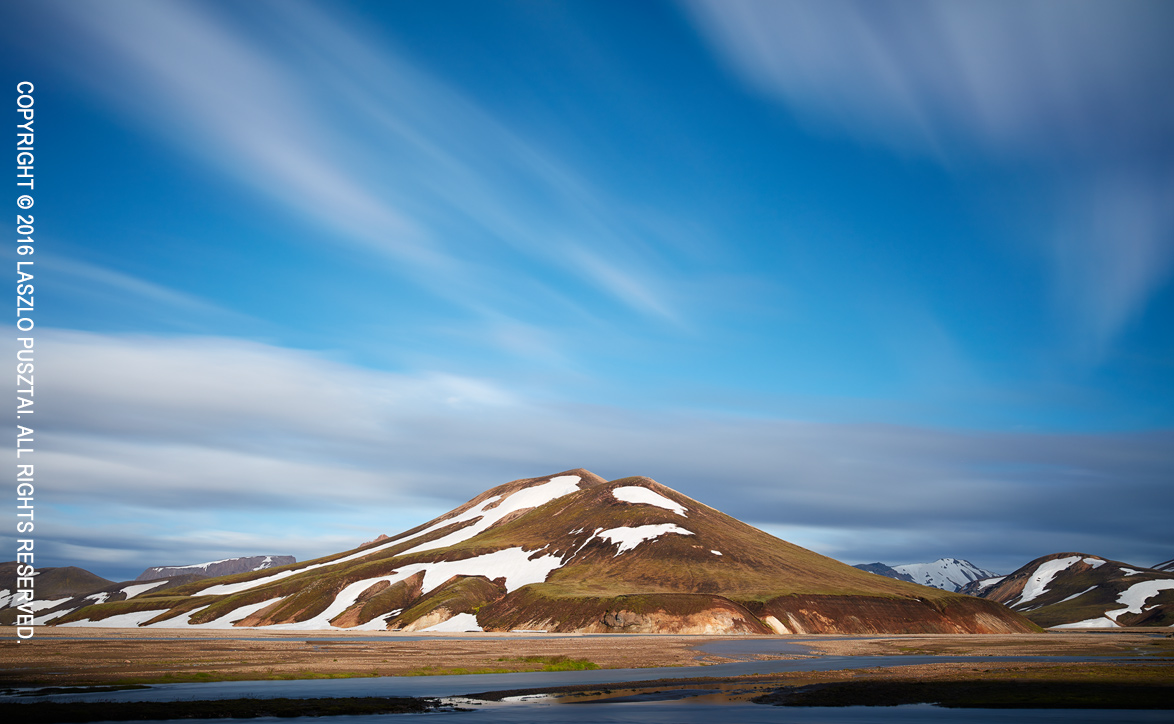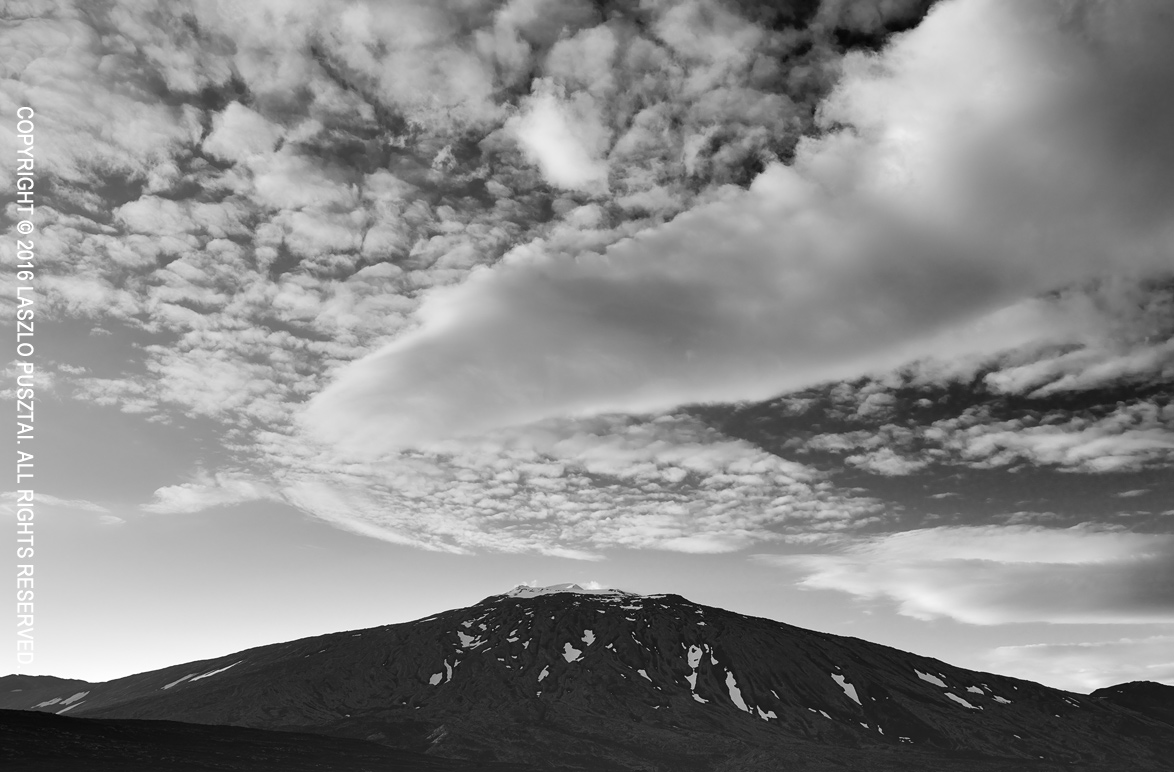Mountains exist on a different time scale than we humans live our fleeting lives. Only if they could tell all those things they witnessed. Maybe that would be too much beauty and too much horror for us, and it’s better that they silently keep the planet’s secrets.

Timeless Mountains
I wanted to wash away the lovely clouds to amplify the sense of timelessness, so I used a total of 16 stops of ND filtering: a LEE Big Stopper and a LEE Little Stopper stacked together (and sealed on the edge with gaffer tape to avoid light leaks and hot spots). It was a long trial and error to get enough sunlight on the mountain with the quickly changing cloud layers casting unwanted shadows here and there. I played for almost an hour, and the above image is the best one.
Taken with the Canon 5DS R and Zeiss Otus 1.4/28. Kuuvik Capture was used to control the long exposures.









